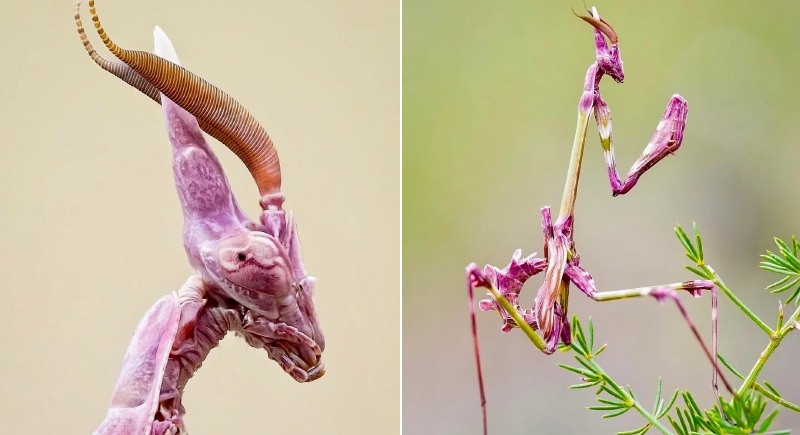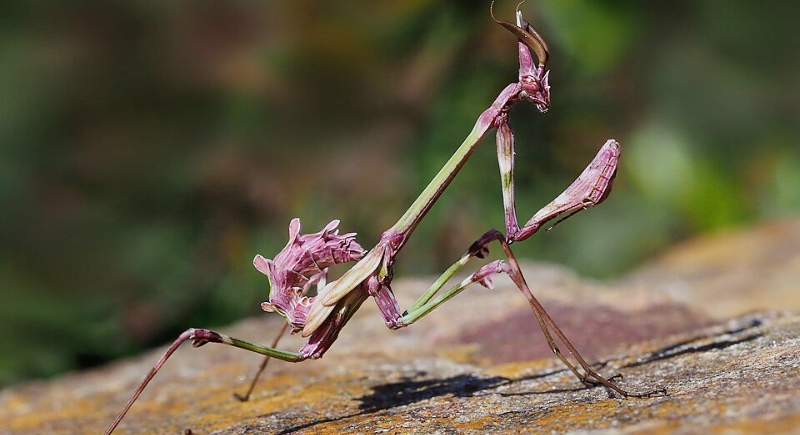Meet the Most Beautiful Yet Terrifying Insect in the World (Yes, It’s Pink)
The Pink Empusa Mantis isn’t the kind of insect you overlook. Native to North Africa, southern Europe, and the Mediterranean, it stands out for its strange mix of beauty and menace. Its delicate coloring and angular body give it an otherworldly look that feels almost misplaced in nature.
Some versions take on a pale pink that helps it disappear among flower shoots and new growth. Its long limbs, spiked body, and horn-like head aren’t just for show, as they all aid in hunting. This mantis doesn’t bother humans and doesn’t spread disease, but it plays an important role in keeping insect populations in check.
Appearance and Physical Traits

Image via Reddit/Mint_Perspective
The body of the Pink Empusa Mantis has an elongated shape with exaggerated features. Its limbs are thin and spiky, which gives it a skeletal look. A cone-like horn extends from the top of its head that helps break up its outline and adds to its mimicry. However, the coloring is the most unusual as the creature appears pink at the beginning of spring, which improves its camouflage in the blooming landscape.
The insect’s overall structure gives it a surreal appearance that makes it difficult to identify at first glance. Its ability to sit completely still adds to its disguise. Despite its delicate coloring, its body is built for predation. Each feature serves a purpose in either concealment or hunting.
Habitat and Distribution
Empusa pennata lives in dry, sunny parts of southern Europe, North Africa, and stretches of western Asia. You’ll find it in countries like Spain, Portugal, Italy, France, Morocco, Tunisia, Libya, and Egypt. It sticks to open areas—places with scrub, tall grass, or scattered plants where it can stay exposed to sunlight but hidden among branches or dry stems. But keep in mind that it doesn’t appear in large numbers, so spotting one in the wild takes some luck.
In its early stages, the creature stays low in the vegetation. As it matures, it moves higher up, often settling on flowering plants or taller shrubs to catch flying insects.
Behavior and Predation

Image via Wikimedia Commons/Frank Vassen
The Pink Empusa Mantis relies on patience more than speed. It stays motionless for long stretches, waiting for movement nearby. When a moth, fly, or beetle drifts within reach, it reacts in an instant, using its front legs to seize and hold the target. Those legs are built for precision, and once they close, few prey manage to escape.
The Pink Empusa Mantis initially starts hunting in its nymph stage and keeps going through adulthood, always using camouflage and stillness to its advantage. Its head can rotate nearly 180 degrees, which gives it a wide field of view. With large, forward-facing compound eyes, it can track movement with surprising accuracy.
It tends to be the most active by the time dawn and dusk roll around, when light is low and it’s harder to spot against dry branches or flowers. It doesn’t go after anything bigger than itself and has no reason to interact with larger animals.